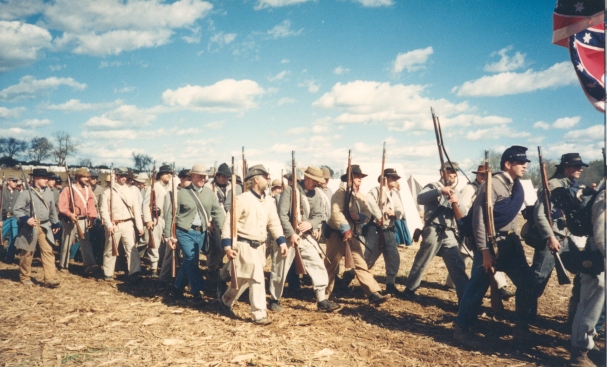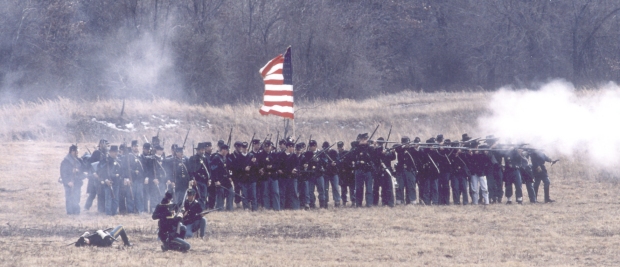
The Encyclopedia of Oklahoma History and Culture
MIDDLE BOGGY, BATTLE OF.
As the Civil War wore on in the Indian Territory, the Union army's Red River campaign targeted Shreveport, Louisiana, in spring 1864. In advance of that offensive, on February 1, 1864, Col. William A. Phillips led a raid into southern Indian Territory. The goal of his force of some fifteen hundred mounted troops was to penetrate into Texas, leaving nothing but scorched earth in their wake, and disrupt the Confederacy's ability to defend Shreveport. Prior to departing Fort Gibson Phillips ordered his men to take no prisoners.
Arriving near Boggy Depot in the Choctaw Nation (in present Atoka County) on February 9, Phillips deployed a detachment to destroy a Confederate outpost at Middle Boggy. Under Maj. Charles Willets, the Union force totaled 350 cavalrymen, including a section of Capt. Solomon Kaufman's artillery. Confederate forces totaled ninety men from Company A, First Regiment Choctaw and Chickasaw Mounted Rifles, under Capt. Adam Nail and included a detachment from the Twentieth Texas Cavalry. Willets shelled the Confederate camp and ordered an attack. At the beginning of the thirty-minute fire fight Nail sent messengers to secure help from Col. John Jumper's First Regiment Seminole Mounted Volunteers, who were camped nearby. After losing half of his men, Nail and the survivors retreated to the approaching Seminole column a few miles away. Willets returned to Phillips's main camp instead of engaging Jumper's Seminoles.
When Jumper and Nail arrived at the battlefield, they found the Union troops gone. Nail also discovered that Willets had obeyed Phillips's orders and executed the Confederate wounded. Willets reported no causalities from the battle, but the Southern dead totaled forty-seven. Phillips's raid ended on February 17, 1864, twenty-five miles from the Red River. His forces had marched a total of four hundred miles into enemy-held territory. Rather than dealing a blow to Southern resistance, Phillips's treatment of civilians and the wounded merely strengthened Confederate resolve.
The Middle Boggy battlefield has not been precisely located. At one time the Oklahoma Historical Society sponsored a reenactment of the battle every three years.







